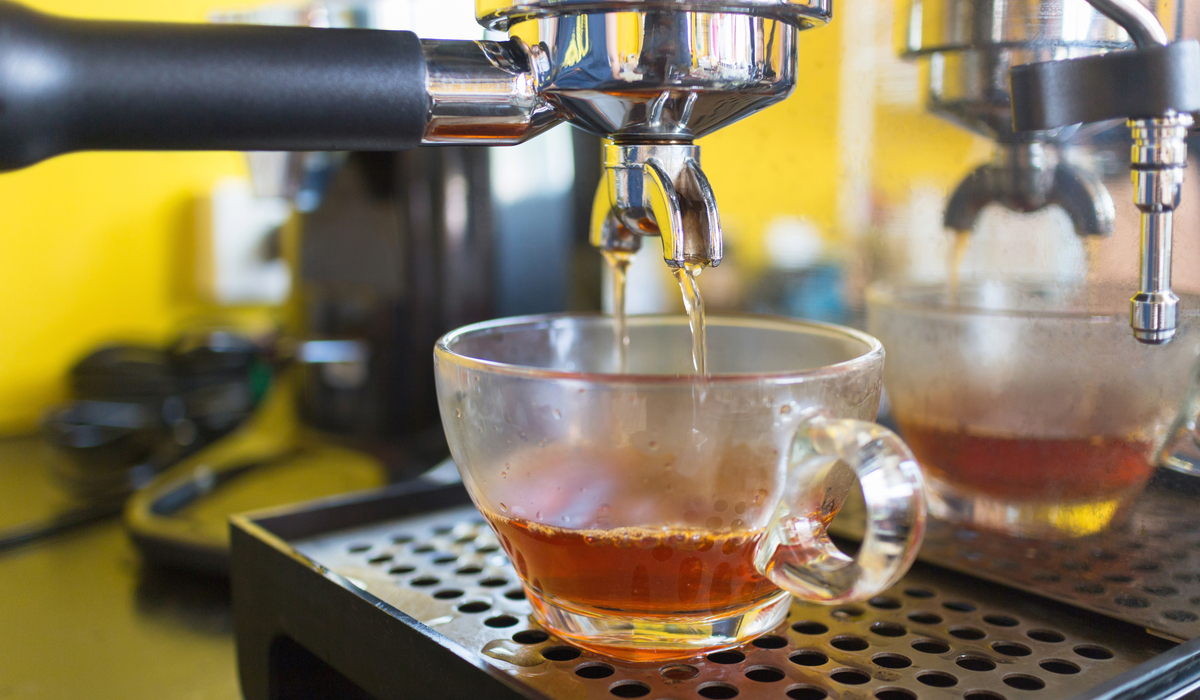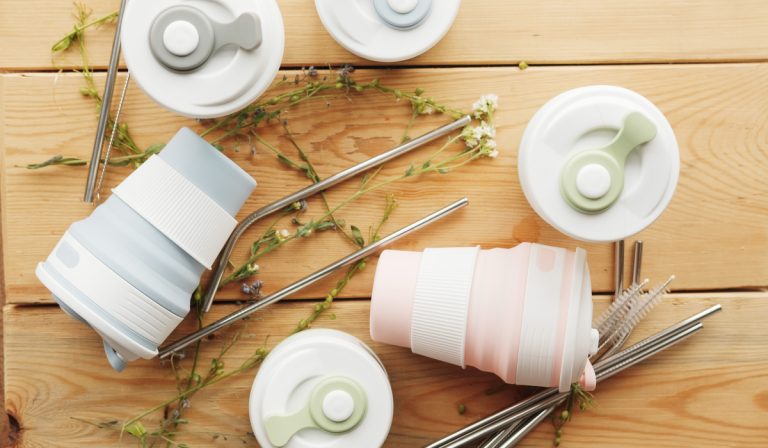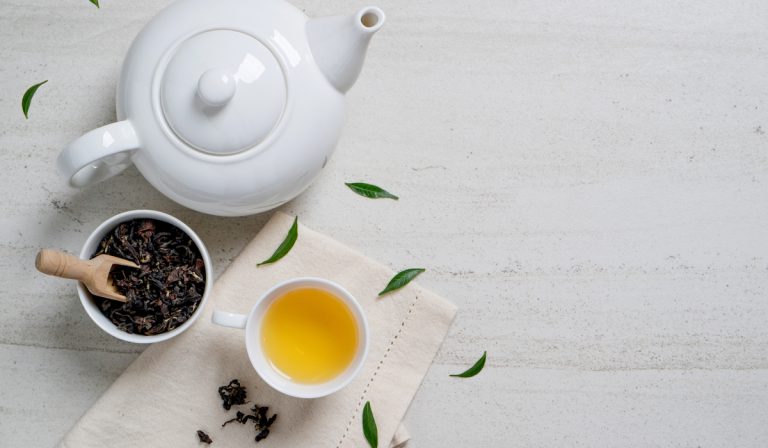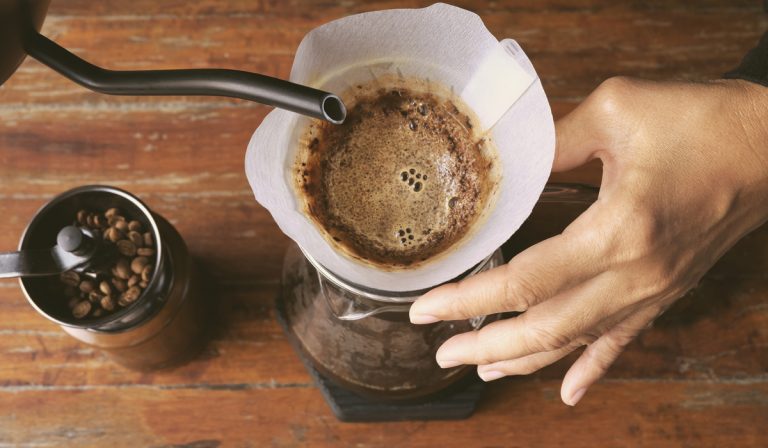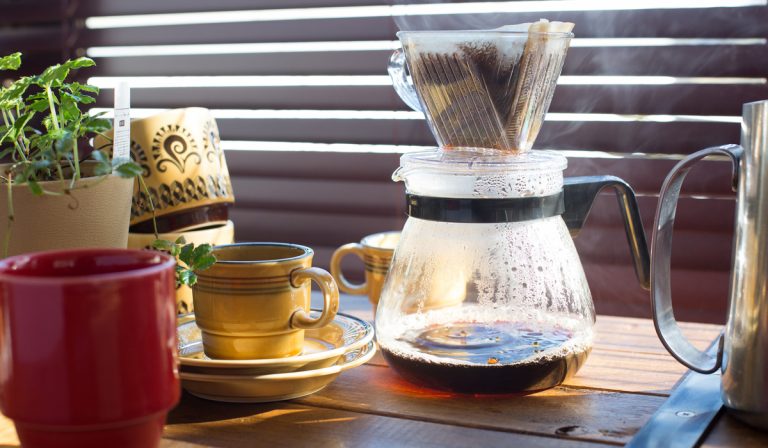Can You Brew Tea in an Espresso Machine? (Solved!)
Maybe you’re a coffee person looking for a more relaxing way to start your morning. After all, coffee is a pretty intense kickstart to a day, which is nice when you need to be jolted awake.
But who likes being jolted awake? Really, it’s much more pleasant to wake up and start your day with a soothing cup of tea.
Tea does contain caffeine in most cases and will wake you up but in a more slow-paced and natural way. And as science has shown time and time again, it’s always best to stick as close to the natural way as possible.
So you have an espresso machine, but you’re trying to figure out if you can brew tea in it to avoid spending money on a new tool for tea making, like a kettle.
Can you brew tea in an espresso machine?
You can brew tea in an espresso machine. However, the brew will be weaker unless you grind the tea leaves and use teas that steep quickly.
That was the quick answer. But you probably don’t want the short answer because your next question will be: “How?” Read on to answer that question and anything else that needs consideration.
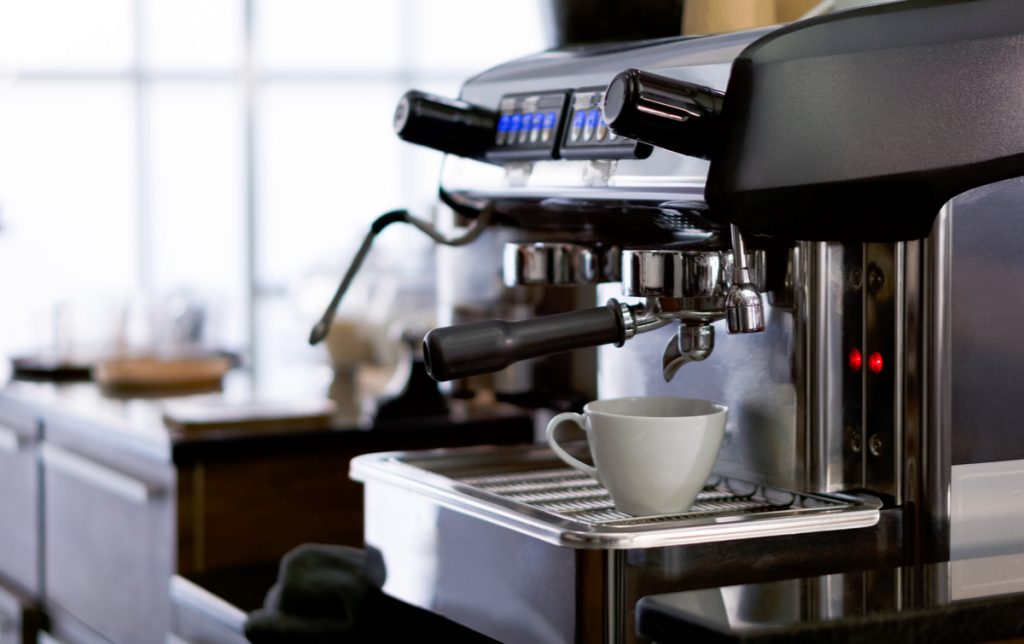
Table of Contents
How to Use an Espresso Machine
The first step is plugging your machine into a power source. Next, check and see if you need to plug in the water source as well.
Some machines have water lines, and some have water containers you need to fill up (located on the top of the machine). The water in espresso machines is used to make the espresso and keep the machine cool, so make sure the water is cool and filtered.
Turn your machine on. It’s an obvious step, but at the same time, it isn’t. The water won’t begin to heat up and boil until the machine is turned on.
So make sure you turn it on with enough time that it can heat up before you’re expecting your coffee to be ready. The bigger the machine, the longer the wait time.
Now, grind the coffee beans. Pour them into your machine’s portafilter at the head of the machine, and confirm the texture with your hands. You want the beans ground as small as possible.
Gradually fill the portafilter with your ground beans. Use your fingers to level it off to fill any available space where air pockets are. You want the result to be a completely filled portafilter with no air pockets.
Next, use the tamper to apply pressure gently to the coffee powder in the portafilter.
Make sure there isn’t any coffee powder inside the tamper, and knock it to ensure it ends up in the center with the rest of the coffee powder. Apply pressure and turn it once more, continuing this process until the coffee is compressed to the required level.
Put the portafilter back in the head of the machine. A platform where you place your coffee cup is placed underneath the portafilter and its valves (the handles underneath the portafilter).
Choose single espresso or double, and either press or switch on start, depending on the machine. Depending on the device, it will either stop once the cup is filled or keep filling, and you’ll have to stop it.
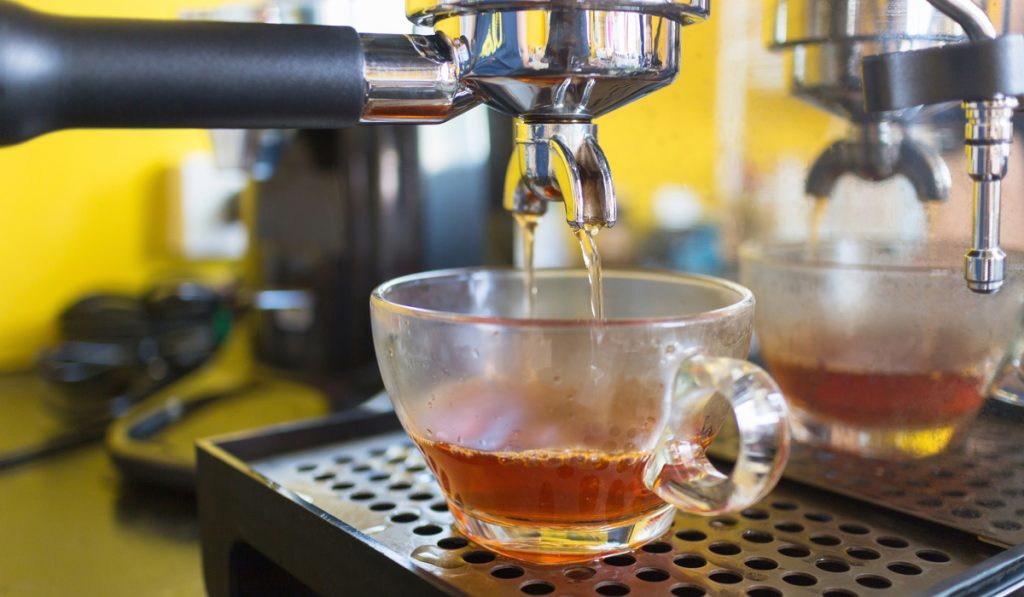
OK, We Know How to Use Espresso Machines Now. But That Whole Explanation Was For Coffee, Not Tea – How Do You Brew Tea in an Espresso Machine?
You got me. I spent that whole section explaining coffee instead of tea, didn’t I?
Well, here’s the thing. I still feel it is important to know how the machine works, so you can understand how tea works being brewed in an espresso machine – and how it doesn’t.
When making tea, you need boiled water. As with the coffee, the machine boils the available water from the source hooked up to make the beverage, so that part of the machine is good: it does what is needed to make tea.
Next step: portafilter.
Obviously, instead of ground coffee, you can put tea leaves in the portafilter, do all the remaining steps, and make your tea. However, after making tea, you’ll need to thoroughly wash out the portafilter because it wasn’t designed to make tea, and tea leaves will clog it up.
And once your tea comes out, it will most likely taste weak because it wasn’t given the proper time and contact it gets sitting in the water directly and steeping.
So in summary, yes, you can brew tea in an espresso machine, but it will take some more effort and will not be very strong.
Wow, This Is Not Encouraging. That’s It? Isn’t There Anything Else We Can Do?
I suppose I have some ideas about how you could strengthen your tea and make espresso tea more appealing – but it’s more challenging to use a coffee maker to produce tea!

Grind Those Leaves Like Coffee Beans (It Almost Rhymes)
Portafilters are designed to hold the ground coffee as the espresso machine forces hot water through them, thus making espresso. If you only use tea leaves, the water will probably pass right through them and only bring so much flavor with them, thus making weak tea.
So, to solve this problem, you can grind your tea leaves just like the coffee beans, and they should be able to mix with the water more effectively and produce a more potent beverage.
…and Use Chill Tea (Meaning Tea that Doesn’t Try to Resist)
Tea leaves are meant to sit with the water in your cup for around five minutes or more, depending on how strong you like it, for the steeping to be correctly carried out.
In comparison, espresso machines are supposed to go much faster, in at least under a minute but more like thirty seconds – hence the name, “espresso”!
So really, the machine doesn’t allow enough time for the tea to steep and produce much flavor.
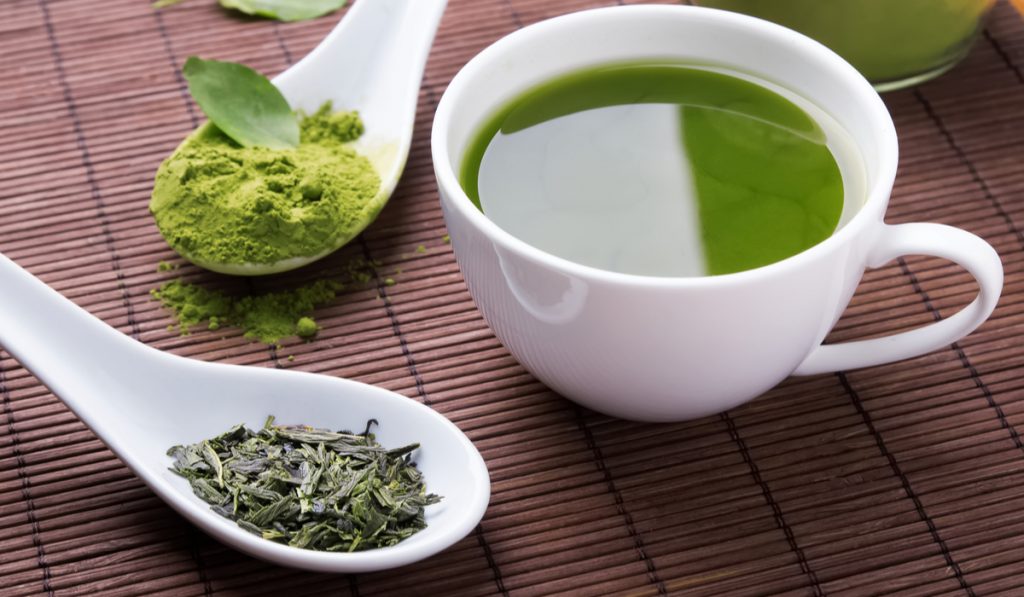
So, what can you do? As I said above, grinding up the leaves will make it much more likely for the machine to squeeze out the flavor.
But another option is to find a tea that diffuses quicker than other teas. One example is green tea, which usually only takes about a minute or two to steep.
I Do Have a Few More Precautions, Though
There are still a few dangers (to your expectations) when using an espresso machine to make your tea. First off, it may taste a little burnt.
Espresso machines make coffee in 30 seconds by heating water to around 200°F and using lots of pressure.
Tea is usually not brewed at such a high temperature, and it could take a toll on your ground leaves, burning the poor things to a crisp.
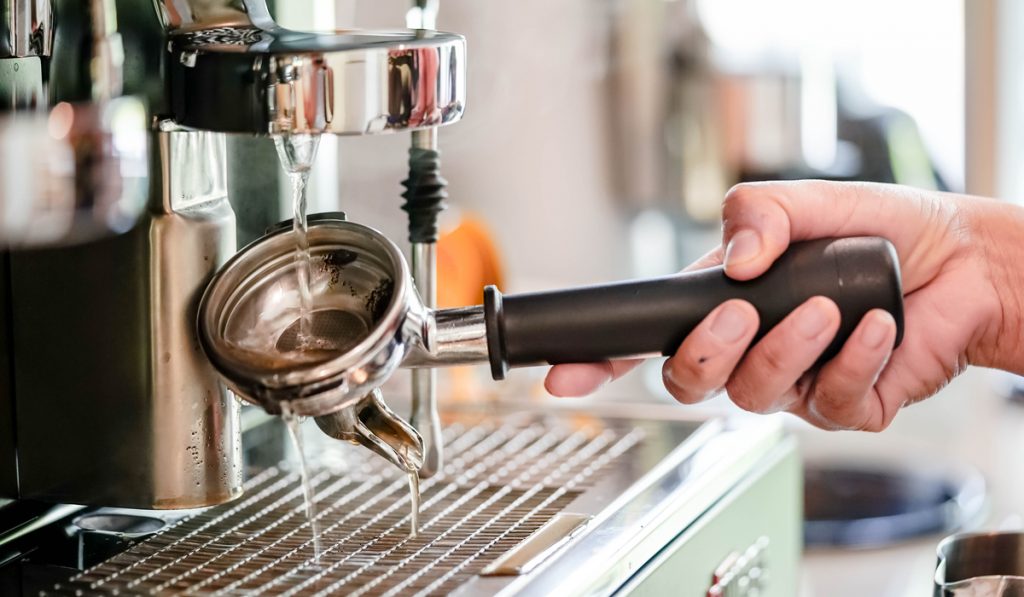
Another side effect is bitterness. The finer you grind tea, the more bitter it can taste.
The hot water pressing against the ground tea leaves could extract enough tannin to make your tea flavorful or extract too much tannin and leave it bitter.
And as I mentioned before, espresso machines are not made for brewing tea, so you’ll have to clean the machine afterward. The tea leaves can get stuck, so you’ll have to wash the portafilter, group head, and basket.
You don’t want a faint, unpleasant tea taste in your future espressos!
Could I Interest You in a French Press?
I will make one last suggestion before I hush up, and you can make your espresso-machine tea.
You could use a French press instead. It is much easier – you put in the tea and hot water, wait the typical amount of time (around five minutes), and then press the tea out into your teacup.
It works because French presses have plungers, which put pressure on the tea inside and press the flavor out into the water. So after letting it steep for five minutes, you press down with the plunger and release the flavor!
In the past, I have used a French press to make hot chocolate with actual cocoa beans. The process was similar: waiting a bit, pressing down on the beans with the plunger, and releasing the flavor into the liquid.
And it was the most delicious hot chocolate I’ve ever had! Maybe because it was directly from Ghana, but I’m going to assume it was because I used a French press, and they work really well!
The Wrap Up
Well, there you have it, folks. For better or worse, you can use your espresso machine to make tea. Do whatever you like; it will work (probably).
And if you’re willing to put in the extra effort for fast tea, then go for it (though I’m not sure fast tea is fast if you’re putting more work in before and after).
But maybe it’s your only tea-making resource. Whatever the reason, I hope I helped you understand the inner workings of an espresso machine a little better and made your tea-making journey a little easier.

